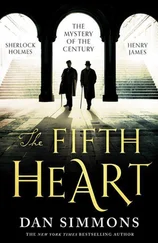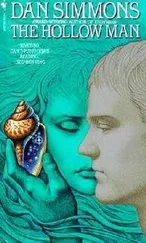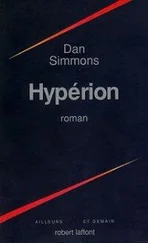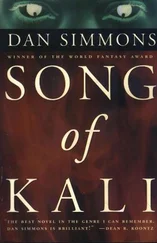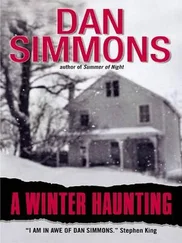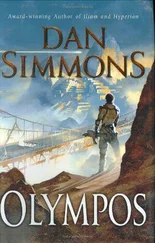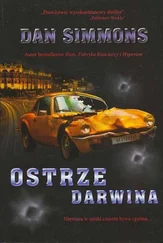During the many days and even weeks in winter when the hours of daylight were short and the weather was too snowy or blowing or cold to spend much time outside except for necessary duties, there were inside-the-tipi games that Paha Sapa and the others could play, such as ta-si-ha , where the game toy was made from the ankle bones of a deer and then strung on a buckskin string, narrow end down. At the end of that string, they tied little bones together. Paha Sapa remembers that they used about eight of these ta-si-ha bones in the game and that the other end of the buckskin string was tied to an eagle’s wing.
When the boys and girls played together, they would take turns holding the eagle wing bone in their right hand and the tassel in their left, swinging the ankle bones out in front of them. If the other player managed to catch the first bone, the play went on. If he or she missed, they passed the ta-si-ha to the next person in line. Paha Sapa was very good at this game; his hands were fast and his eyes were good. After catching that first bone ten times, the teams would start on the second, third, and so forth, until all ten players would have caught the tassel. Other inside-the-tipi games, Paha Sapa remembers, included i-ca-sio-he , a sort of marbles game—although the marbles were almost perfectly round stones, which were hard to find. The boys prayed to the Six Grandfathers and to Wakan Tanka himself to help them find perfectly round i-ca-sio-he stones, and they were always found.
It was a silly game called istokikicastakapi that led to Paha Sapa’s discovering his touch-the-earth-to-fly ability.

HE IS SEVEN SUMMERS and playing istokikicastakapi with a group of the younger boys, most his age or younger. The game consists of chewing rosebush berries, spitting the pits into your hand, and then wheeling to throw the pits into someone’s face before he can duck or escape.
There is an obnoxious boy just Paha Sapa’s age playing that day named Fat Frog—and the name is appropriate, for besides being fat he is a takoja , a pampered and spoiled grandson of the lazy old man named Feet in the Fire—and while they are running in their circle near the creek and playing istokikicastakapi , Fat Frog grabs Paha Sapa, pulls his head close, and spits in his face. There are almost no rosebush berry pits, just spit. Curds and slimy trails of Fat Frog spit all over Paha Sapa’s face.
Paha Sapa does not wait to think; he balls his fist and strikes Fat Frog square in the middle of his fat face, bloodying his nose and knocking the boy backward into a prickly pear. Fat Frog screams and calls to his three older cousins standing nearby, boys who also live in Feet in the Fire’s lazy lodge, and the three older boys leap on Paha Sapa and strike him with their fists and feet and with willow branches, all while Fat Frog is screaming and holding his bleeding nose and crying that Paha Sapa broke it and that he’s going to tell his grandfather, and Feet in the Fire will come find Paha Sapa and kill him with the knife that Feet in the Fire used to scalp ten wasichus.
When the three larger cousins are finished beating on Paha Sapa, they kick him in the ribs once or twice and go away. Paha Sapa lies there hurting, but he has no impulse to cry. It is all too funny, especially the image of old, fat Feet in the Fire chasing him with a scalping knife. He only hopes that he did break Fat Frog’s nose.
When he gets up and dusts himself off, Paha Sapa realizes that he has got blood—mostly his own, he thinks—spattered down the front of his second-best deerskin shirt. Three Buffalo Woman will beat him for sure when he goes back to the lodge.
Paha Sapa only shakes his head—still amused—and limps away from the village, wanting to be alone for a while.
A little over a mile from the village, out of sight of all the tipis and even of the horses and the boys and men who guard them, Paha Sapa comes to a low, wide area where for some reason the prairie grasses are low, almost like what he will someday learn is called a “lawn.” Paha Sapa lies down on this soft grass and soft dirt and kicks off his han’pa —his moccasins.
He lies there on his back with his arms spread wide, the soles of his feet turned down hard against the evening-cooling soil, and his curving, clinging toes—his siphas —curling hard into the dirt.
Paha Sapa almost closes his eyes, squinting through what seem like tears even though he has not been crying, and looks up at a paling evening sky of a deep blue that seems disturbingly familiar to the boy. He relaxes completely—first loosening the muscles in his tensed neck, then letting his arms go limp, then releasing the pressure on his curving fingers and clawing toes, then uncoiling something deep inside his belly. For some reason he cries out Hokahey! as if he is a warrior riding into battle.
What happens next is very difficult for him to describe later, even to himself. He will not tell his beloved tunkašila Limps-a-Lot about his touch-the-earth-to-fly experiences until several more years have passed.
Paha Sapa senses the earth spinning as if it were a ball instead of a flat thing. He sees the stars wheeling in the evening sky even though the stars have not yet come out. He hears the song the setting sun is singing and can hear the answering song the grasses and plants are singing back to it as the light begins to fade. Then Paha Sapa feels his body grow cold and heavy and distant from him even as he —the spirit-self Paha Sapa—becomes more and more buoyant. Then his spirit-self floats up out of his body and away from the earth.
He rises for many minutes before he thinks to roll over onto his stomach in midair and look down. He is so high that he cannot see his body that he left behind, so high that the village is only barely visible as a scattering of tan tipis under tiny trees along a river receding from sight. Paha Sapa rolls onto his back again and continues to rise, higher yet, rising past the few scattered clouds showing pink now in the low rays of the setting sun, and then he is higher than all the clouds.
He looks and rolls over again. The sky above him grows black even as the clouds so far below begin to glow pinker and the shadows on the earth grow longer. Paha Sapa knows that it is terribly cold just outside his spirit-skin—colder than any winter air that has ever touched him—just as he knows that the air up here is too thin to breathe, but none of that affects his spirit-body and spirit-self. He ceases rising when the sky is black all around and when the stars are burning above the blue blanket of air below, and he looks down with eyes suddenly grown as sharp as an eagle’s.
What he sees on that round earth—he can plainly see the horizon curving from where he silently floats—are the Paha Sapa, the Black Hills. The Black Hills are an oval between the Belle Fourche River to the north and the Cheyenne River, where the actual tribes of Cheyenne, driven out of the Black Hills and northern plains by the Sioux a century earlier, still live and hunt. The Black Hills, Paha Sapa now sees, are an oval inland island that he will later learn constitutes about forty-five hundred square miles of dark trees and hills, all enclosed by an almost sexual oval ridge of red sandstone that sets the hills off dramatically from the tan and dull green of the endless sagebrush prairie surrounding them. The Black Hills look like a woman’s winyaˇn shan , with pink, open lips. Or perhaps like a heart.
For the first time, seeing the geological rut and rim surrounding the Black Hills from this height, Paha Sapa understands why Limps-a-Lot has called that long, depressed, hogback-ridged oval that surrounds the Black Hills the “Race Track,” because of a story of all the animals racing one another there back when the world was young. It does look like a track worn down by racing feet.
Читать дальше


